A semianalytic model of leukocyte rolling
- PMID: 15315955
- PMCID: PMC1304766
- DOI: 10.1529/biophysj.104.039693
A semianalytic model of leukocyte rolling
Abstract
Rolling allows leukocytes to maintain adhesion to vascular endothelium and to molecularly coated surfaces in flow chambers. Using insights from adhesive dynamics, a computational method for simulating leukocyte rolling and firm adhesion, we have developed a semianalytic model for the steady-state rolling of a leukocyte. After formation in a force-free region of the contact zone, receptor-ligand bonds are transported into the trailing edge of the contact zone. Rolling velocity results from a balance of the convective flux of bonds and the rate of dissociation at the back edge of the contact zone. We compare the model's results to that of adhesive dynamics and to experimental data on the rolling of leukocytes, with good agreement. We calculate the dependence of rolling velocity on shear rate, intrinsic forward and reverse reaction rates, bond stiffness, and reactive compliance, and use the model to calculate a state diagram relating molecular parameters and the dynamic state of adhesion. A dimensionless form of the analytic model permits exploration of the parameters that control rolling. The chemical affinity of a receptor-ligand pair does not uniquely determine rolling velocity. We elucidate a fundamental relationship between off-rate, ligand density, and reactive compliance at the transition between firm and rolling adhesion. The model provides a rapid method for screening system parameters for the potential to mediate rolling.
Figures


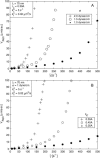
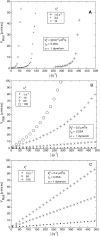

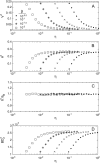

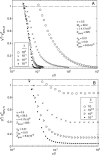

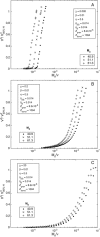
Similar articles
-
Adhesive dynamics simulations of the shear threshold effect for leukocytes.Biophys J. 2007 Feb 1;92(3):787-97. doi: 10.1529/biophysj.106.082321. Epub 2006 Nov 3. Biophys J. 2007. PMID: 17085490 Free PMC article.
-
Simulation of cell rolling and adhesion on surfaces in shear flow: general results and analysis of selectin-mediated neutrophil adhesion.Biophys J. 1992 Jul;63(1):35-57. doi: 10.1016/S0006-3495(92)81577-1. Biophys J. 1992. PMID: 1384734 Free PMC article.
-
Adhesive dynamics simulations of sialyl-Lewis(x)/E-selectin-mediated rolling in a cell-free system.Biophys J. 2000 Oct;79(4):1891-902. doi: 10.1016/S0006-3495(00)76439-3. Biophys J. 2000. PMID: 11023895 Free PMC article.
-
Simulation of cell rolling and adhesion on surfaces in shear flow. Microvilli-coated hard spheres with adhesive springs.Cell Biophys. 1991 Apr;18(2):145-82. doi: 10.1007/BF02989811. Cell Biophys. 1991. PMID: 1726526 Review.
-
Mechanisms for flow-enhanced cell adhesion.Ann Biomed Eng. 2008 Apr;36(4):604-21. doi: 10.1007/s10439-008-9464-5. Epub 2008 Feb 26. Ann Biomed Eng. 2008. PMID: 18299992 Free PMC article. Review.
Cited by
-
'Slings' enable neutrophil rolling at high shear.Nature. 2012 Aug 16;488(7411):399-403. doi: 10.1038/nature11248. Nature. 2012. PMID: 22763437 Free PMC article.
-
Differential adhesion of microspheres mediated by DNA hybridization I: experiment.Biophys J. 2006 Jun 1;90(11):4128-36. doi: 10.1529/biophysj.105.072629. Epub 2006 Mar 13. Biophys J. 2006. PMID: 16533856 Free PMC article.
-
The transmembrane domains of L-selectin and CD44 regulate receptor cell surface positioning and leukocyte adhesion under flow.J Biol Chem. 2010 Apr 30;285(18):13490-7. doi: 10.1074/jbc.M110.102640. Epub 2010 Mar 8. J Biol Chem. 2010. PMID: 20212041 Free PMC article.
-
Stability of adhesion clusters and cell reorientation under lateral cyclic tension.Biophys J. 2008 Oct;95(8):4034-44. doi: 10.1529/biophysj.108.131342. Epub 2008 Jul 11. Biophys J. 2008. PMID: 18621806 Free PMC article.
-
Effects of nanopillar array diameter and spacing on cancer cell capture and cell behaviors.Nanoscale. 2014 Nov 7;6(21):12482-9. doi: 10.1039/c4nr02854f. Nanoscale. 2014. PMID: 25137436 Free PMC article.
References
Publication types
MeSH terms
Grants and funding
LinkOut - more resources
Full Text Sources
Other Literature Sources

